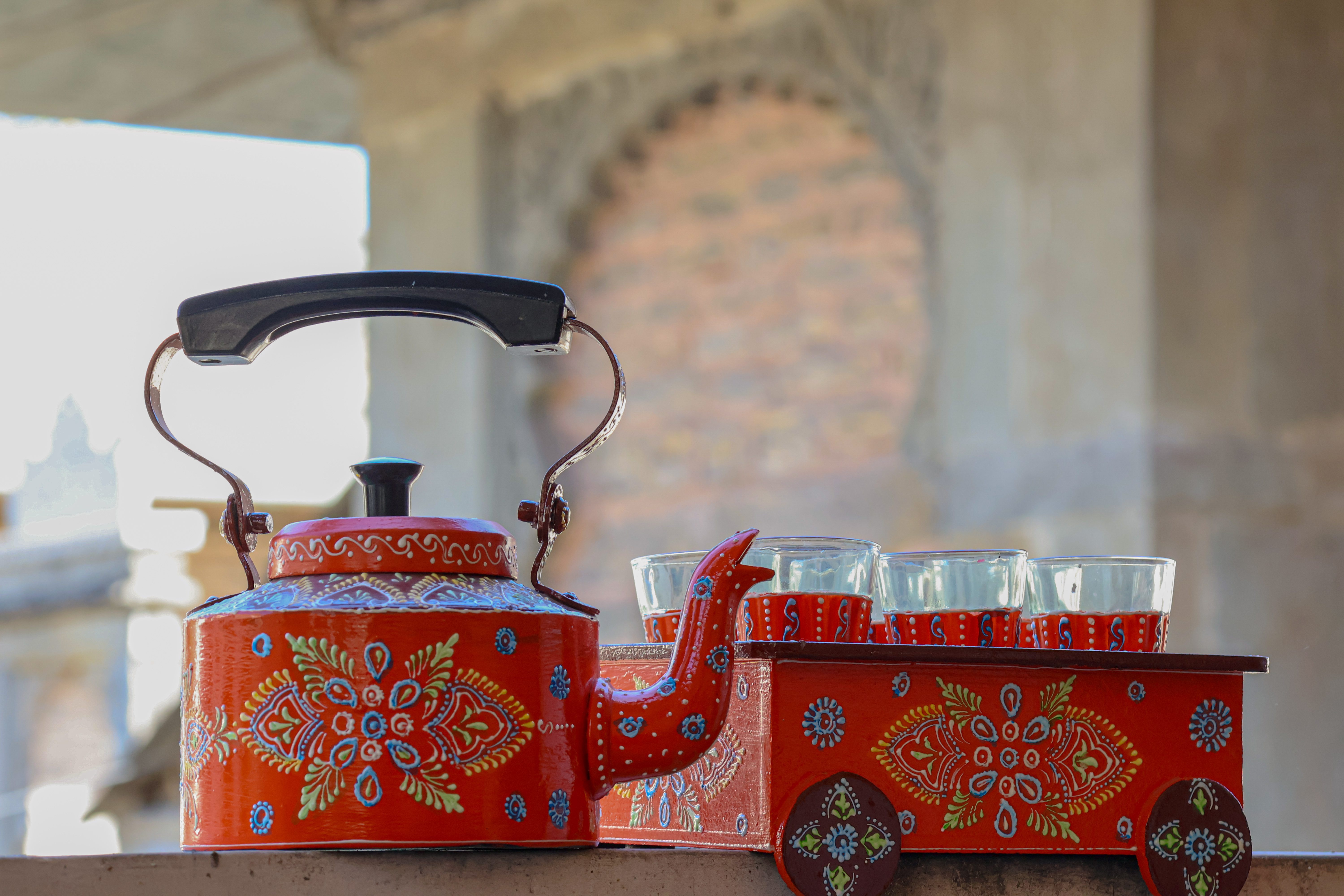Rajasthani Handicrafts: Introduction
Rajasthan, the land of vibrant colors, majestic palaces, and timeless traditions, is a treasure trove of exquisite handicrafts that have enthralled the world for centuries. The intricate craftsmanship, vibrant hues, and cultural significance of Rajasthani Handicrafts make them an integral part of India’s cultural heritage. This article delves into the world of Rajasthani handicrafts, exploring their history, diversity, and enduring popularity.
A Glimpse into the Past
Rajasthan, located in the northwestern part of India, boasts a rich history that dates back to ancient times. The state has been home to various dynasties, each contributing to the region’s cultural heritage. This diverse historical tapestry has left an indelible mark on Rajasthani handicrafts, with each era bringing its own unique techniques and designs.
The tradition of handicrafts in Rajasthan can be traced back to the Indus Valley Civilization. Over time, Rajasthani artisans mastered their skills, creating exquisite pieces of art that adorned palaces, temples, and the everyday lives of the people. The Mughal era further enriched these traditions, with the royal patronage encouraging artisans to create stunning pieces of art.
Key Handicrafts of Rajasthan
- Blue Pottery: Jaipur, the capital of Rajasthan, is renowned for its vibrant blue pottery. This art form is characterized by its distinctive blue and white glaze, resulting in intricate patterns and designs on plates, bowls, and tiles. The craft’s origins can be traced back to the 14th century when it was introduced by Mughal artisans.
- Block Printing: Block printing, or “Dabu” printing, is another celebrated art form in Rajasthan. Using wooden blocks to create intricate designs, this craft produces beautiful textiles with unique patterns. Sanganer and Bagru, both towns near Jaipur, are famous for their block printing traditions.
- Kundan Jewelry: The art of crafting Kundan jewelry involves setting semi-precious gemstones within a gold or silver framework. Jaipur is a hub for Kundan jewelry, where skilled artisans create breathtaking pieces that are treasured by people around the world.
- Pichwai Paintings: Originating in Nathdwara, these paintings depict various scenes from Lord Krishna’s life and are often used as devotional art in temples. Pichwai art is characterized by its intricate detailing and vibrant colors.
- Miniature Painting: Rajasthan has a long history of miniature painting, with each region having its unique style. These delicate paintings depict everything from court scenes to mythological stories, and they continue to be highly prized by art collectors.
- Rajasthani Carpets: Rajasthan’s carpets are known for their exquisite design and craftsmanship. The city of Jaipur, in particular, produces woolen and silk carpets of exceptional quality, often adorned with traditional motifs and intricate patterns.
- Metal Craft: The cities of Jodhpur and Jaipur are known for their metal craft, where artisans skillfully create items such as utensils, decorative pieces, and jewelry using materials like copper, brass, and silver.
- Leather Craft: The state’s leather artisans are known for their expertise in crafting items such as traditional footwear, bags, belts, and more. Jodhpur is famous for its leather craft, with its iconic Jodhpur boots being a prime example of the artistry involved.
The Making of Rajasthani Handicrafts
The creation of Rajasthani handicrafts involves a laborious and time-consuming process that showcases the skills passed down through generations. Artisans play a pivotal role in preserving and evolving these art forms. Here’s a glimpse of how some of these crafts are brought to life:
- Blue Pottery: Artisans prepare a dough of quartz, glass, and Multani Mitti (Fuller’s Earth) to form the base material. After shaping the items, intricate designs are hand-painted with indigo and cobalt oxide, giving the pottery its characteristic blue hue. The items are then glazed and fired in kilns to create the final product.
- Block Printing: Skilled block printers carve intricate designs onto wooden blocks, often inspired by nature, folklore, or historical motifs. These blocks are then used to print the patterns onto fabrics, which are soaked in natural dyes to bring the designs to life.
- Kundan Jewelry: Artisans create a framework from gold or silver and embed precious and semi-precious gemstones using techniques that involve shaping and cutting. The final piece is a harmonious fusion of metal and vibrant gemstones, showcasing remarkable craftsmanship.
- Pichwai Paintings: Pichwai artists use natural pigments to paint on cloth or paper, rendering scenes from Lord Krishna’s life in intricate detail. These paintings are often used as wall hangings in temples or homes.
- Miniature Painting: Miniature artists use fine brushes and intricate detailing to create stunning images on materials like paper, ivory, and silk. They often depict intricate court scenes, landscapes, and mythological narratives.
- Rajasthani Carpets: Skilled weavers use traditional techniques to create carpets that often feature motifs inspired by nature, Mughal art, or local folklore. These weavers employ intricate knotting methods to achieve the desired design and quality.
- Metal Craft: Metal craftsmen employ techniques like casting, embossing, and engraving to shape copper, brass, and silver into various forms. They create items that are not only functional but also artistic.
- Leather Craft: Leather artisans hand-cut, stitch, and embellish leather to create items like traditional footwear (juttis), bags, belts, and more. They often employ intricate embroidery and embellishments to make each piece unique.
The Cultural Significance
Rajasthani handicrafts are more than just art; they are a reflection of the state’s vibrant culture and rich history. They play a crucial role in various aspects of Rajasthani life:
- Economic Livelihood: The handicrafts industry provides employment to a significant portion of Rajasthan’s population, especially in rural areas. Artisans and craftsmen, often working in small family-owned businesses, rely on their skills to make a living.
- Preservation of Heritage: Rajasthani handicrafts are a means of preserving and passing on traditional skills and knowledge from one generation to the next. Many artisans learn their craft from their parents and grandparents, ensuring the continuity of these art forms.
- Cultural Identity: These crafts are integral to the cultural identity of Rajasthan. They are used in various rituals, festivals, and ceremonies, symbolizing the state’s deep-rooted traditions and beliefs.
- Tourism Attraction: Rajasthan’s handicrafts are a major draw for tourists. Visitors to the state are often captivated by the intricate designs, vibrant colors, and the opportunity to purchase unique, handcrafted souvenirs.
- Export Industry: Many Rajasthani handicrafts are in demand globally. The export of these products not only boosts the state’s economy but also promotes Indian craftsmanship on the world stage.
The Challenges Faced
Despite their historical significance and cultural relevance, Rajasthani handicrafts face several challenges:
- Competition from Machine-Made Products: Mass-produced, machine-made goods often flood the market, making it difficult for traditional artisans to compete. These goods are usually cheaper but lack the unique, handmade quality of Rajasthani crafts.
- Declining Artisan Population: The younger generation in many artisan families is increasingly choosing alternative career paths due to the financial instability of traditional crafts. This trend puts the future of these crafts in jeopardy.
- Access to Markets: Many artisans face challenges in accessing wider markets. They often rely on middlemen who take a substantial share of the profits.
- Changing Consumer Preferences: Modern consumers often favor convenience and fast fashion over handmade, traditional products, which can affect the demand for these crafts.
Preservation and Promotion
Efforts are being made to preserve and promote Rajasthani handicrafts:
- Artisan Cooperatives: Various cooperatives have been established to provide artisans with access to better markets and fair compensation. These organizations empower artisans by eliminating intermediaries and ensuring a fair share of profits.
- Government Initiatives: The government of Rajasthan, along with the Indian government, has initiated schemes and programs to support artisans. These initiatives include training, financial support, and marketing assistance.
- Global Exposure: Artisans are participating in international exhibitions and trade fairs to showcase their work to a global audience. This exposure has led to increased international recognition and demand for Rajasthani handicrafts.
- Skill Enhancement: Training programs are being conducted to enhance the skills of artisans and keep traditional techniques alive.
Conclusion
Rajasthani Handicrafts represent the soul of Rajasthan, reflecting its history, culture, and traditions. The skills and artistry passed down through generations continue to captivate people worldwide. While these crafts face numerous challenges, the determination of artisans, government support, and growing global recognition are helping preserve and promote Rajasthani handicrafts. Supporting and appreciating these artisans and their timeless creations is not just an investment in art; it’s an investment in a living heritage that deserves to thrive for generations to come.


